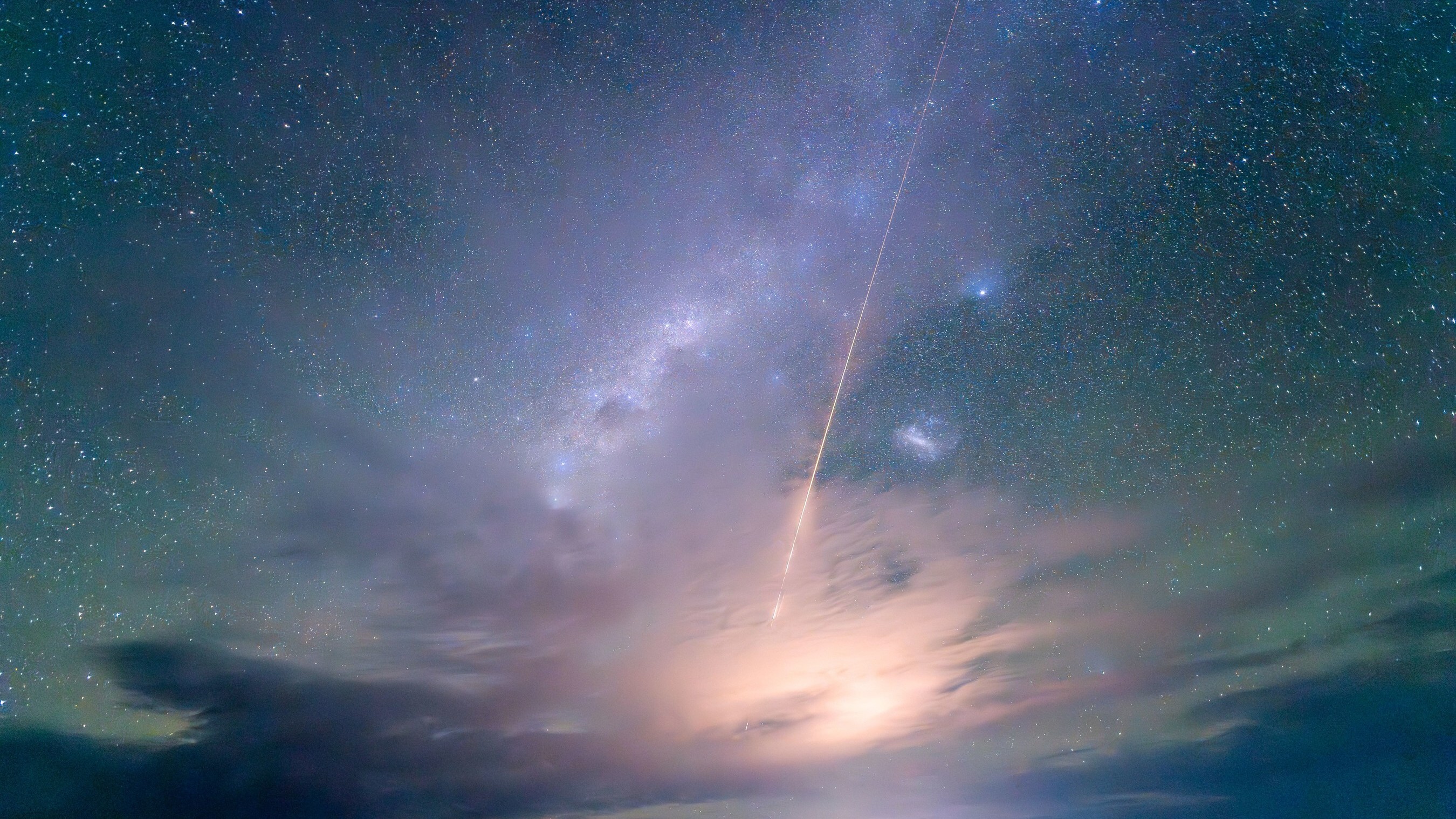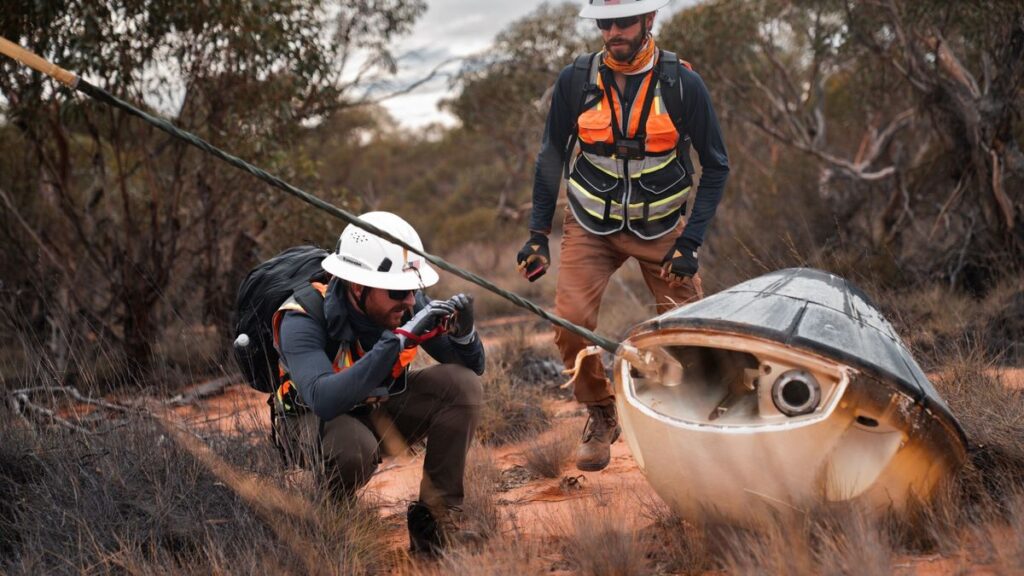A saucer-like space capsule touched down in the Australian outback last month, marking the first time a commercial spacecraft has landed Down Under.
Varda Space Industries’ Winnebago-2 (W-2) space capsule reentered Earth’s atmosphere and dropped down in South Australia on Feb. 28. In doing so, W-2 also set a world first by becoming the first commercial spacecraft to return to a commercial spaceport, according to a statement released by the Australian Space Agency.
The successful return of W-2 was a “landmark moment for the Australian space sector,” Australian Space Agency representatives wrote in the statement.
The company behind W-2, Varda, is an American startup based in California. W-2 originally left Earth from California on a SpaceX Falcon 9 rocket on Jan. 14 as part of the Transporter-12 rideshare mission — the Transporter carries satellites from various customers into space. W-2 then spent 45 days in orbit, carrying payloads from the U.S. Air Force and NASA before dropping down to the Koonibba Test Range, run by Australian aerospace company Southern Launch.
Related: Watch: SpaceX Starship explodes mid-flight for a 2nd time this year, raining fiery debris over Florida
W-2 weighed 265 pounds (120 kilograms) and had various technologies onboard to advance space research. For example, W-2 carried Varda’s expanded pharmaceutical reactor, which allows for the production of medicine in space, according to a statement released by Southern Launch.
The space capsule was also equipped with a heatshield developed with NASA and a spectrometer built by the U.S. Air Force Research Laboratory. The spectrometer, known as Optical Sensing of Plasmas in the ReEntry Environment (OSPREE), measured the environment around the capsule as it reentered at speeds exceeding Mach 25, which is 25 times the speed of sound, or around 19,000 miles per hour (31,000 kilometers per hour), according to a statement released by Varda.

“We are ecstatic to have W-2 back on our home planet safely and are proud to support significant reentry research for our government partners as we continue building a thriving foundation for economic expansion to low Earth orbit,” Varda CEO Will Bruey said in the statement.
The Southern Launch team watched the W-2 reentry from the ground with advanced tracking telescopes and led the recovery operations, which included representatives from the Far West Coast Aboriginal Corporation, the traditional owners of the land where the capsule landed, according to the Southern Launch statement.
“For Australia, this mission ushers in a new era of space capabilities for the nation,” Southern Launch representatives wrote in its statement. “The W-2 mission was the first time a commercial space craft re-entry was granted under Australian legislation and is just the first of many scheduled to return to the Koonibba Test Range.”
